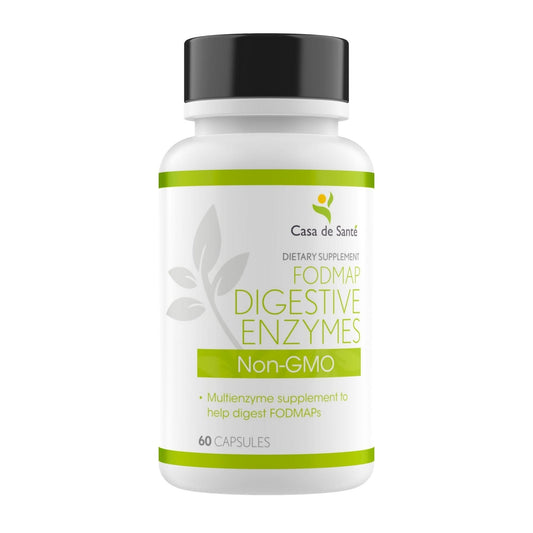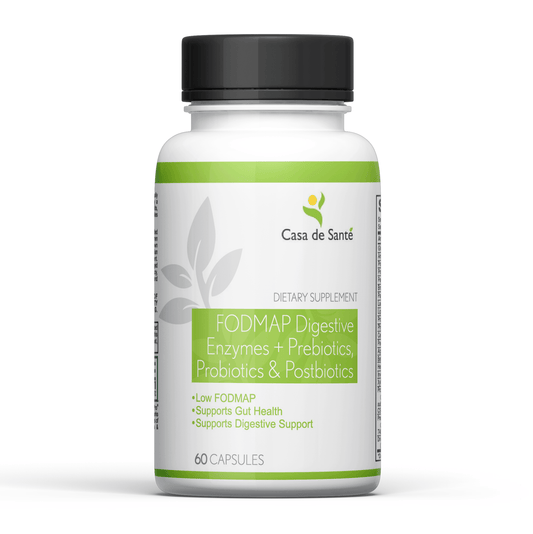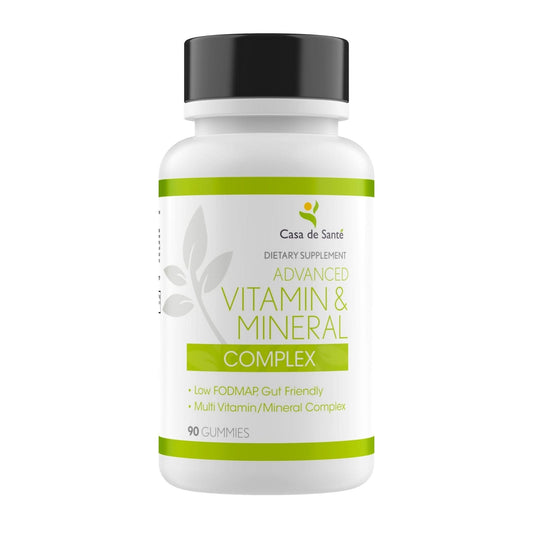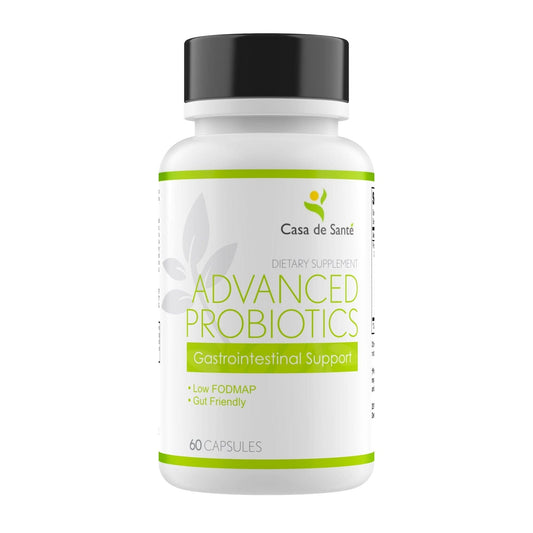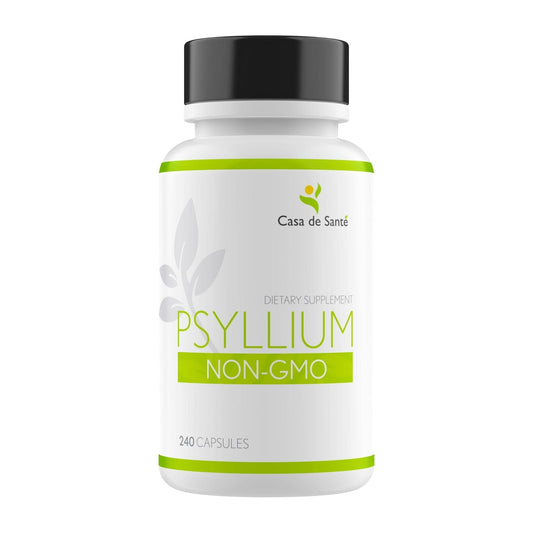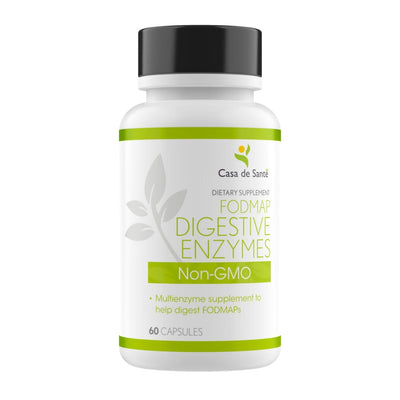Your Ultimate Guide to an Easy Low FODMAP Meal Plan for Digestive Health
Jumping into the world of low FODMAP eating can seem like a big task, especially when you're trying to keep your gut happy. But don't worry, creating an easy low FODMAP meal plan doesn't have to be complicated. With some simple steps, you can enjoy delicious meals that are gentle on your stomach. Let's break it down and see how you can whip up meals that make your tummy smile.
Key Takeaways
- Start by understanding what FODMAPs are and how they affect your body.
- Focus on fresh, whole foods that are naturally low in FODMAPs.
- Plan your meals ahead to avoid last-minute stress and poor choices.
- Keep a food diary to track what works and what doesn't for your digestion.
- Remember, everyone's body reacts differently, so personalize your meal plan.
Understanding the Basics of a Low FODMAP Diet
What is a Low FODMAP Diet?
A low FODMAP diet is designed to help those with digestive issues like IBS by reducing certain carbohydrates that aren't well absorbed in the small intestine. These carbs, known as FODMAPs, can cause bloating and stomach pain when fermented by gut bacteria. The diet involves identifying and avoiding foods high in these carbs, such as wheat, onions, and certain fruits.
Benefits of Following a Low FODMAP Diet
Following a low FODMAP diet can significantly ease digestive discomfort. Many people report reduced symptoms of bloating, gas, and irregular bowel movements. By systematically eliminating and then reintroducing foods, individuals can pinpoint specific triggers and manage their diet more effectively.
Common Misconceptions About Low FODMAP
- It's Not a Lifelong Restriction: Many think they must avoid high FODMAP foods forever, but the diet is about finding personal triggers.
- Not All Carbs Are Bad: Only specific types of carbohydrates are problematic, not all.
- It's Not Just for IBS: While popular for IBS, others with digestive issues might benefit too.
The low FODMAP diet isn't about deprivation; it's about understanding your body's unique needs and adjusting your food choices to feel better.
Creating Your Easy Low FODMAP Meal Plan
Steps to Designing a Low FODMAP Meal Plan
Creating a low FODMAP meal plan might seem daunting at first, but breaking it down into steps can make it manageable. Start by understanding which foods are high in FODMAPs and need to be avoided. This includes certain fruits like apples and pears, dairy products, and some vegetables like onions and garlic.
- Elimination Phase: Begin by removing all high FODMAP foods for about 4-6 weeks. This helps in identifying the foods that might be causing digestive discomfort.
- Reintroduction Phase: Slowly reintroduce high FODMAP foods one at a time to see which ones your body can tolerate.
- Personalization Phase: Develop a personalized plan that avoids your specific trigger foods while including a variety of low FODMAP options.
Essential Ingredients for Low FODMAP Cooking
Stocking your kitchen with the right ingredients is key. Here are some essentials:
- Proteins: Eggs, chicken, and beef are excellent sources of protein that are naturally low in FODMAPs.
- Grains: Rice and quinoa are great staples for your meals.
- Dairy Alternatives: Almond milk and lactose-free yogurt can be handy substitutes.
- Fruits and Vegetables: Opt for bananas, blueberries, carrots, and spinach.
Tips for Meal Prepping on a Low FODMAP Diet
Meal prepping can save time and ensure you always have a low FODMAP meal ready. Here are some tips:
- Plan Your Meals: Set aside time each week to plan your meals and make a shopping list.
- Batch Cooking: Prepare large quantities of low FODMAP-friendly foods like grilled chicken or roasted vegetables, and store them for the week.
- Use Storage Containers: Invest in good quality containers to keep your meals fresh and organized.
Taking the time to plan and prepare your meals not only helps in sticking to your diet but also reduces stress, knowing you have safe and delicious options ready to go.
Delicious Low FODMAP Breakfast Ideas
Quick and Easy Breakfast Recipes
Starting your morning with a satisfying meal is essential, especially when following a low FODMAP diet. Here are a few quick and easy recipes to kickstart your day without upsetting your stomach:
- Scrambled Eggs with Spinach: Whisk together a couple of eggs and toss in some fresh spinach. Cook until the eggs are just set. This dish is protein-packed and ready in minutes.
- Overnight Oats with Almond Milk: Mix oats with almond milk and let them sit overnight. Add low FODMAP fruits like strawberries or blueberries in the morning for a sweet touch.
- Rice Cakes with Peanut Butter: Top rice cakes with a generous spread of peanut butter and sliced bananas for a crunchy, satisfying breakfast.
Low FODMAP Smoothie Options
Smoothies can be a great way to fuel your morning. Here are some low FODMAP combinations that are both refreshing and gentle on your gut:
- Berry Delight: Blend strawberries, blueberries, and lactose-free yogurt for a creamy, fruity drink.
- Tropical Twist: Combine pineapple, spinach, and coconut milk for a taste of the tropics.
- Green Machine: Mix kiwi, cucumber, and mint leaves for a refreshing start.
Breakfast Foods to Avoid
While there are plenty of delicious options, some breakfast foods can trigger symptoms and should be avoided:
- Dairy Milk and Yogurt: Opt for lactose-free versions to reduce gut irritation.
- Wheat-based Cereals: These can be high in FODMAPs; choose alternatives like rice or corn-based cereals.
- Certain Fruits: Apples and pears are high in FODMAPs and can cause discomfort.
Eating a balanced breakfast that aligns with your low FODMAP plan is crucial for maintaining digestive health. A regular nutrition assessment can help tailor your diet to avoid any potential triggers.
Satisfying Low FODMAP Lunch and Dinner Recipes
Hearty Lunch Options
Creating a filling lunch on a low FODMAP diet is easier than it sounds. It's all about using the right ingredients. Here are some ideas to get you started:
- Grilled Chicken Salad: Mix grilled chicken with spinach, arugula, and a simple olive oil and lemon dressing.
- Turkey and Swiss Lettuce Wraps: Use large lettuce leaves to wrap turkey and Swiss cheese, adding a side of carrot sticks.
- Quinoa and Shrimp Bowl: Combine cooked quinoa with grilled shrimp, cherry tomatoes, and a sprinkle of feta cheese.
Simple Dinner Ideas
Dinner doesn’t have to be complicated to be delicious and gut-friendly. Here are a few simple dishes:
- Baked Salmon with Quinoa: Season salmon with herbs, bake it, and serve with a side of quinoa and steamed green beans.
- Beef Stir-Fry: Use lean beef strips, bell peppers, and zucchini, stir-fried in a bit of sesame oil.
- Lemon Herb Chicken: Marinate chicken in lemon juice and herbs, then bake with potatoes and broccoli.
Using Leftovers Creatively
Don't let leftovers go to waste. They can be transformed into new meals with a little creativity:
- Chicken Salad Sandwich: Use leftover grilled chicken to make a salad with low FODMAP mayo and serve on gluten-free bread.
- Stir-Fry Fried Rice: Toss leftover beef stir-fry with rice and a splash of soy sauce.
- Quinoa Veggie Soup: Add leftover quinoa to a broth with any leftover veggies for a quick soup.
Experimenting with flavors and ingredients can make your low FODMAP meals both satisfying and exciting. Keep it simple, and you'll find plenty of delicious options.
Snacks and Desserts on a Low FODMAP Diet
Healthy Snack Choices
Finding snacks that fit into a low FODMAP diet can be tricky but not impossible. You don't have to sacrifice taste for digestive comfort. Here are some go-to snacks that are both delicious and gut-friendly:
- Rice Cakes with Peanut Butter: A simple yet satisfying option. Opt for natural peanut butter to keep it FODMAP-friendly.
- Carrot and Cucumber Sticks with Hummus: Make sure to use a low FODMAP hummus, perhaps one made with canned chickpeas and no garlic.
- Popcorn: A light and crunchy snack. Just skip the butter and opt for a sprinkle of salt or a dash of olive oil.
Low FODMAP Dessert Recipes
Desserts don't have to be off-limits on a low FODMAP diet. You can enjoy sweet treats with some clever ingredient swaps.
- Banana Oat Cookies: Made with ripe bananas and oats, these cookies are simple to make and naturally sweet.
- Lactose-Free Yogurt Parfait: Layer lactose-free yogurt with low FODMAP fruits like strawberries or blueberries, and top with a sprinkle of nuts.
- Chocolate Rice Puffs: Melt some low FODMAP chocolate and mix with puffed rice for a crunchy treat.
Avoiding High FODMAP Ingredients in Treats
When it comes to desserts, it's crucial to avoid high FODMAP ingredients to prevent any digestive discomfort.
- Watch Out for Dairy: Opt for lactose-free versions of milk and cream.
- Skip the High-FODMAP Fruits: Steer clear of apples, pears, and stone fruits.
- Avoid Wheat-Based Flours: Use alternatives like almond or coconut flour.
Embarking on a low FODMAP journey doesn't mean you have to miss out on life's simple pleasures. With a little creativity and the right ingredients, you can enjoy snacks and desserts without the worry of digestive distress.
Maintaining Digestive Health with a Low FODMAP Lifestyle
Long-term Benefits of a Low FODMAP Diet
Living with a low FODMAP diet isn't just about immediate relief; it's a lifestyle choice that can provide ongoing digestive comfort. Sticking with this diet can help reduce bloating, gas, and other uncomfortable symptoms long-term. It's like giving your gut a break from the foods that cause it trouble. Over time, you'll likely notice a more settled stomach and less discomfort after meals, which is a huge win for anyone dealing with digestive issues.
Incorporating Exercise and Mindfulness
Pairing your diet with regular exercise and mindfulness practices can make a world of difference. Exercise helps keep your digestive system active and can reduce stress, which is often linked to gut problems. Mindfulness, like meditation or yoga, can also be beneficial. These practices help you stay in tune with your body's signals and manage stress better, leading to a happier gut.
Monitoring and Adjusting Your Diet
A low FODMAP diet isn't one-size-fits-all, and what works for one person might not work for another. It's important to keep track of what you eat and how it makes you feel. Consider keeping a food diary to note any flare-ups or improvements. This way, you can adjust your diet as needed, ensuring it continues to work for you. It's all about finding that sweet spot where your gut feels good and your meals are enjoyable.
If you want to keep your digestive system healthy while following a low FODMAP diet, visit our website for helpful tips and resources. Start your journey to better gut health today!
Conclusion
Wrapping up, sticking to a low FODMAP meal plan might seem like a lot at first, but it's totally doable. Once you get the hang of it, you'll find it can really help with those pesky digestive issues. It's all about finding what works for you and your gut. Remember, it's not just about cutting out foods; it's about discovering new ones that you can enjoy without worry. So, take it one meal at a time, and don't stress too much. You've got this!
Frequently Asked Questions
What exactly is a Low FODMAP diet?
A Low FODMAP diet is a way of eating that helps people with tummy troubles like IBS by cutting out certain types of carbs that can cause gas and bloating.
Why would someone follow a Low FODMAP diet?
People follow a Low FODMAP diet to help reduce symptoms like stomach pain, gas, and bloating, especially if they have conditions like IBS.
Are there any common misunderstandings about the Low FODMAP diet?
Yes, some folks think it's a forever diet, but it's actually meant to help identify trigger foods and isn't usually followed long-term.
How do I start a Low FODMAP meal plan?
Begin by learning which foods are low in FODMAPs, then plan meals around those. It's also helpful to prepare your meals in advance.
Can I eat fruits on a Low FODMAP diet?
Yes, but only certain fruits like strawberries and blueberries. Others, like apples and cherries, should be avoided.
Is it hard to maintain a Low FODMAP diet?
It can be challenging at first, but with planning and by gradually reintroducing foods, it becomes easier to manage.



